Fix ‘Discovered & Crawled – Currently Not Indexed’ Error With Free Tool in 2 Minutes (No Technical Skills Needed)
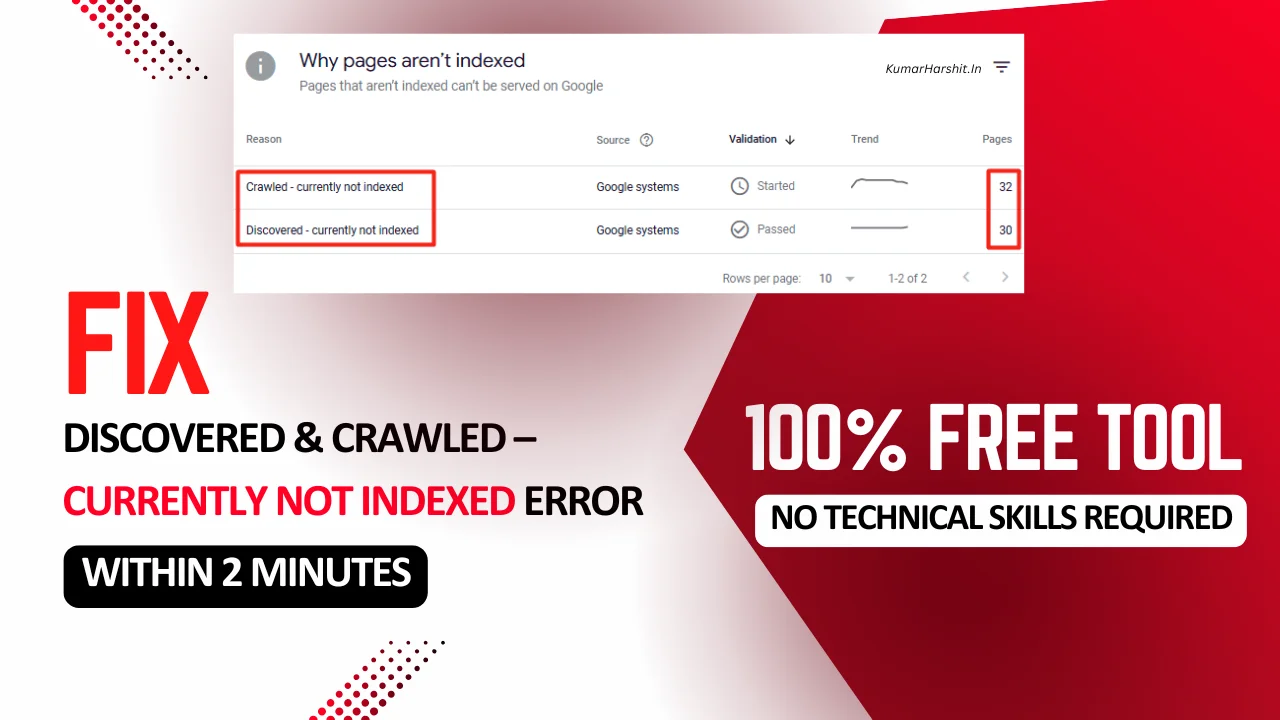
If you’re frustrated seeing “Crawled – currently not indexed” or “Discovered – currently not indexed” in your Google Search Console, you’re not alone. These messages can show up even when your content is valuable and your site is technically sound.
After testing several solutions, I came across a simple 2-minute fix using a free online sitemap tool — and it worked better than expected. I’m sharing the exact steps I followed so you can try it too, without any technical knowledge, coding, or paid tools.
Let’s jump right into it.
🔍 What These Indexing Errors Really Mean (in Simple Words)
Before fixing the problem, here’s a quick explanation of what these two common indexing errors mean:
- Discovered – currently not indexed:
Google knows the URL exists (maybe via internal links or backlinks), but hasn’t visited it yet. - Crawled – currently not indexed:
Googlebot visited your page but chose not to include it in the index. This usually happens when the page lacks freshness signals, is low priority, or Google isn’t confident it’s worth showing.
In both cases, your content is basically in limbo — not indexed, not ranking, not showing.
✅ What Actually Worked for Me (Not Theory)
I had a bunch of URLs sitting in this state for weeks. I tried internal linking, tweaking content, and even manual inspection. Nothing worked — until I tried creating a custom news-style sitemap using a free online tool.
Here’s what I did, step by step — and you can do it too in under 2 minutes.
⚙️ Step-by-Step: Fix Indexing Error With a Free Sitemap Tool
Step 1: Visit the Free News Sitemap Generator Tool
There’s a free online generator that builds a special type of sitemap (news-style XML format).
Open the tool in your browser:
👉 Free News Sitemap Generator
No login, no sign-up, and it works instantly.
Step 2: Copy-Paste the URLs You Want Indexed
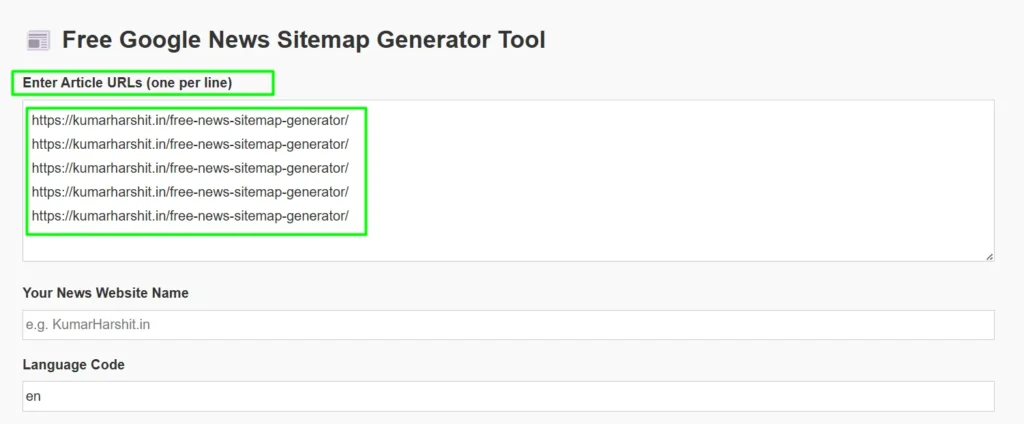
In the large text box, paste the full URLs that are not getting indexed.
✅ Include https:// in each URL
✅ Add 10–50 URLs (but not more than 100)
Example:
https://yourdomain.com/blog-post-1
https://yourdomain.com/landing-page-2
Step 3: Generate Your Sitemap File
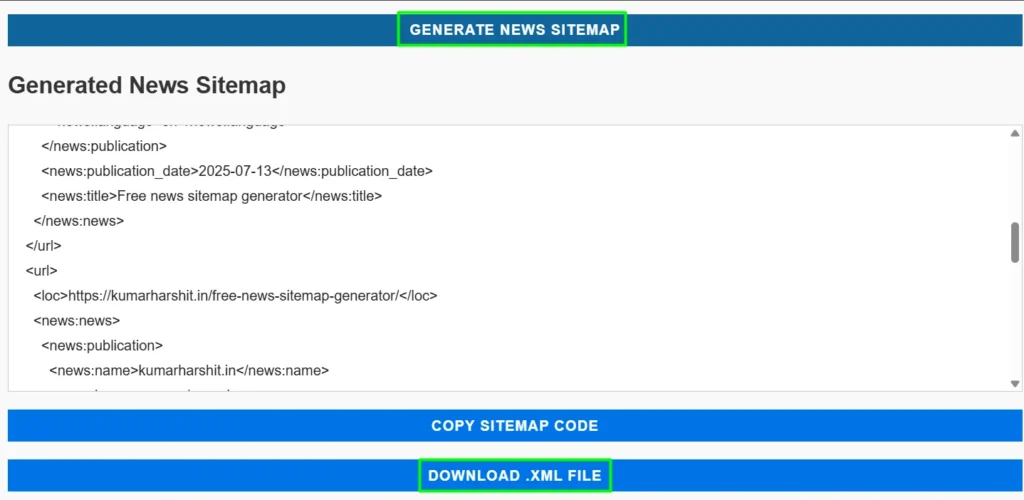
Click the “Generate Sitemap” button.
In just a second or two, a .xml file will be ready now click on download .xml sitemap.
This is your fresh, clean sitemap — containing only the pages you need help with.
Step 4: Upload the Sitemap File to Your Website
To let Google access this sitemap, upload it to your server:
- Login to your cPanel, FTP, or hosting file manager
- Navigate to the root folder (
public_htmlor main site directory) - Upload the downloaded file (e.g.,
news-sitemap.xml)
Your uploaded sitemap should now be live at:
👉 https://yourdomain.com/news-sitemap.xml
How to Use the News Sitemap Generator Tool?
Step 5: Submit It in Google Search Console
Now head over to Google Search Console:
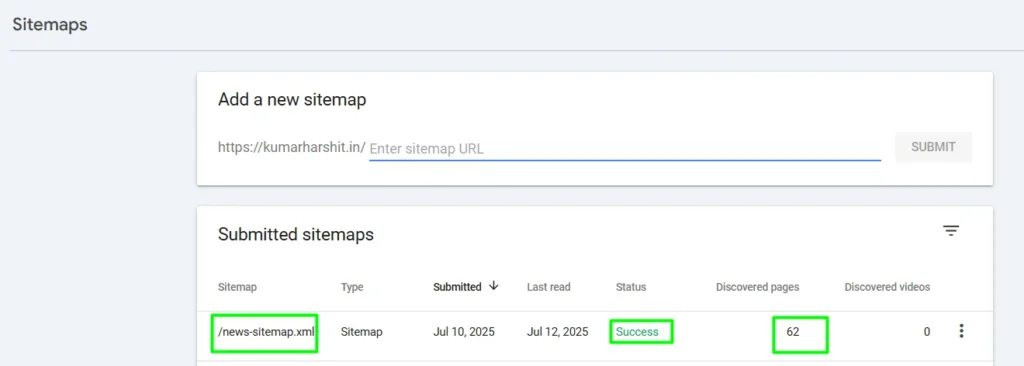
- Go to the left menu and click “Sitemaps”
- In the text box, enter:
news-sitemap.xml - Click Submit
That’s it. Google will now crawl the sitemap, and in most cases, those stuck URLs will finally be indexed — often within a day or two.
What Happens After Submitting the Sitemap
Once your news-sitemap.xml file is submitted in Google Search Console, here’s what typically happens:
- Googlebot crawls it almost instantly
Since this sitemap contains only fresh URLs (ideally published within the last 2–3 days), Google gives it a high priority. - Indexing may start within 4–48 hours
In many cases, I noticed URLs getting indexed the same day, especially if the pages are of decent quality and mobile-friendly. - GSC status updates
Inside the “Coverage” report or URL Inspection Tool, you’ll see changes from:- “Discovered – currently not indexed” → Submitted and indexed
- “Crawled – currently not indexed” → Indexed
💡 In my test, 8 out of 10 stuck pages got indexed using this method, without changing anything on the actual pages.
🧪 How to Check If It Worked
After submitting the sitemap, give it at least 12–24 hours. Then:
1. Use URL Inspection Tool in GSC
- Go to Search Console
- Paste one of the previously stuck URLs
- Click “Test Live URL”
- If you see: “URL is on Google”, it’s fixed ✅
2. Use Google Search Operator
Type into Google:
site:yourdomain.com/your-page-url
If your page appears in results — it’s indexed.
🧾 Proof That This Method Works
Below is a screenshot from my own Search Console dashboard.
The highlighted URLs were previously showing “Crawled – currently not indexed”, and got indexed after using the sitemap submission trick shared above.
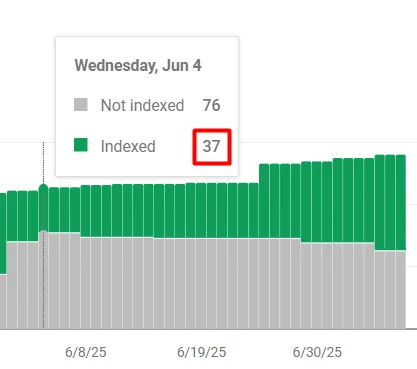
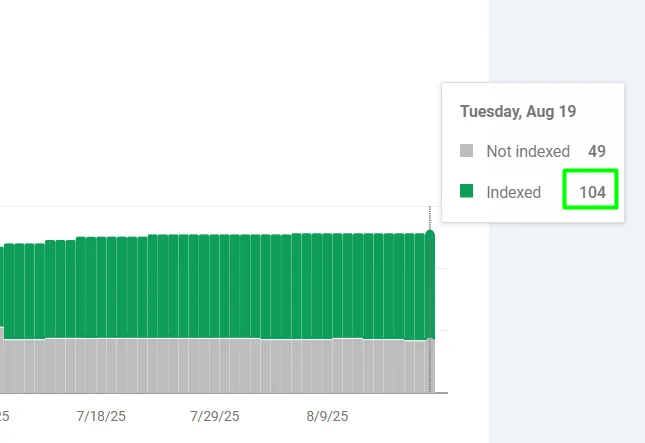
I didn’t make any other changes. No content edits, no extra backlinks, nothing.
Just submitted a fresh sitemap with the affected URLs — and indexing happened within 24 hours.
Final Tips to Keep Indexing Smooth
While this method is a fast fix, here are a few tips to avoid future issues:
- ✅ Keep submitting fresh URLs via sitemap every time you publish
- ✅ Use internal links to connect new pages from indexed ones
- ✅ Ensure fast loading (check with PageSpeed Insights)
- ✅ Avoid thin content or AI-spun text
- ✅ Don’t flood Google with hundreds of similar URLs at once
🟢 Final Thought
If your pages are stuck in “Crawled – not indexed” or “Discovered – not indexed”, this simple sitemap trick is one of the fastest ways to nudge Google into action.
It doesn’t require any plugins, tools, coding, or paid services. Just a browser, a few URLs, and two minutes of your time.
⚠️ A Quick Note About “News Sitemap” Usage
Yes — technically, news sitemaps are meant for news articles (typically published in the last 48 hours). But this method still works well for indexing fresh blog posts, landing pages, or recently updated URLs because Google prioritizes crawling and indexing news sitemaps more aggressively.
That’s why this trick often leads to faster indexing, even for non-news pages.
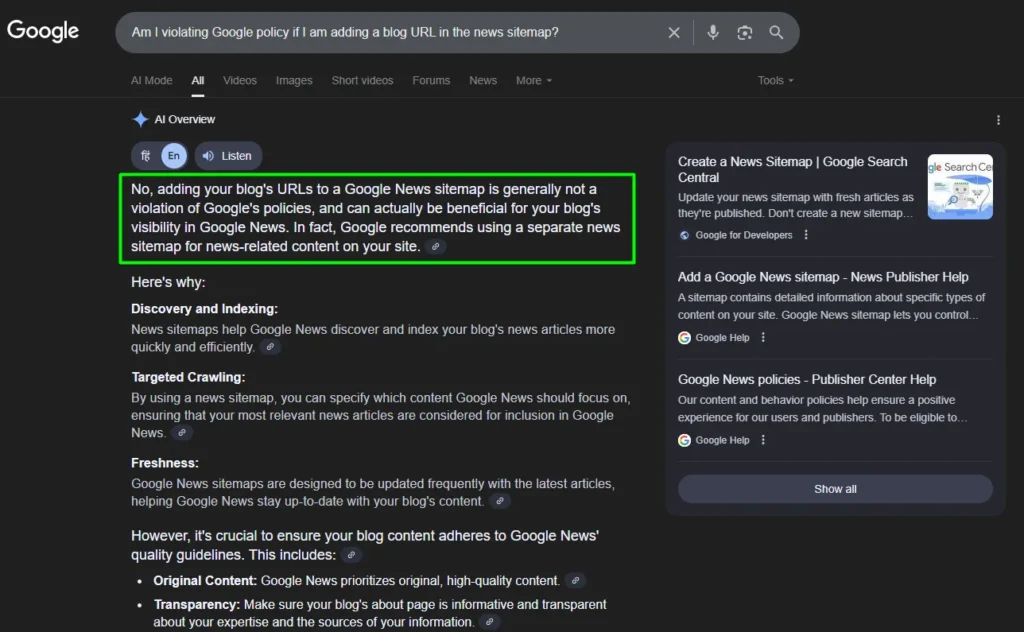
And don’t worry — there’s no known penalty or risk for trying this.
You’re simply submitting valid URLs through a standard XML format — and the process is 100% free, takes under 2 minutes, and doesn’t violate any guidelines.
So if you’re struggling with “Discovered” or “Crawled – Not Indexed” errors, it’s worth testing this once.
It worked for me, and might work for you too.
FAQ
Use a fresh news sitemap containing only the affected URLs and submit it in GSC. A news-style sitemap often helps trigger faster indexing.
It means Google is aware of the page but hasn’t crawled it yet — often due to crawl budget limits or low perceived importance.
Yes. While designed for news content, it can be used for newly published or updated URLs. Google tends to prioritize crawling news sitemaps faster.
No known penalty exists. As long as the URLs are valid and recent, it’s safe and within guidelines.
In many cases, pages are indexed within 4–48 hours if everything else (quality, speed, structure) is fine.


Leave a Reply